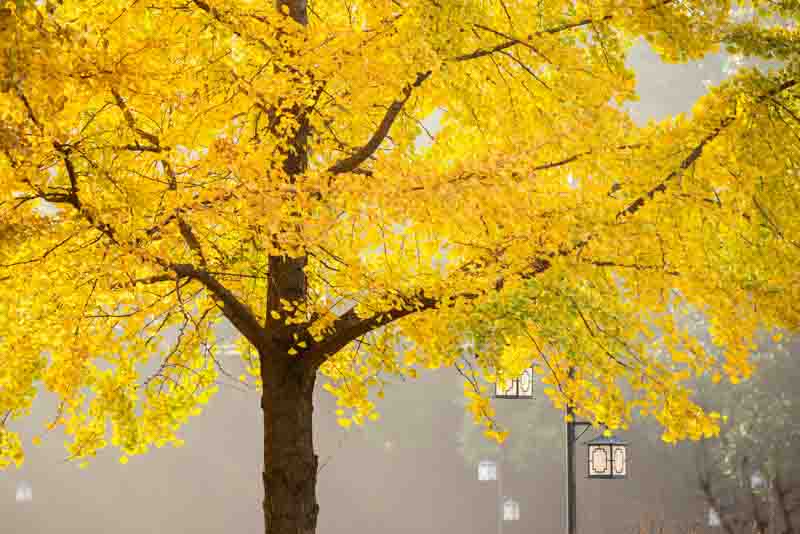Ginkgo Tree: : Ancient Marvel in Modern Gardens
Ginkgo biloba, also known as the Maidenhair Tree, is one of the world’s most fascinating trees, revered for its beauty and unparalleled history. Here are some interesting facts about this ancient species:
Living Fossil: Ginkgo biloba is often called a “living fossil.” It is the sole survivor of the Ginkgophyta division, with fossils dating back over 270 million years. This makes it one of the oldest living tree species on Earth, virtually unchanged through millennia.
Symbol of Resilience: Ginkgos have remarkable resilience. They can live for over a thousand years, with some specimens in China believed to be over 2,500 years old. They’ve survived major extinction events, including the one that wiped out the dinosaurs.
Atomic Bomb Survivor: Ginkgo trees were among the few living things to survive the atomic bomb in Hiroshima, Japan, in 1945. Trees that were mere meters from the blast center began to bud after the explosion without significant deformities, symbolizing hope and peace.
Dioecious Nature: Ginkgo trees are dioecious, meaning they have separate male and female trees. The female trees produce fruit-like seeds that have a distinctive, unpleasant smell when ripe, reminiscent of rancid butter.
Medicinal Uses: Extracts from Ginkgo biloba leaves have been used in traditional Chinese medicine for centuries. Modern science studies its potential benefits, including improving memory, cognitive speed, and blood circulation.
Unique Leaves: The leaves of the Ginkgo are uniquely fan-shaped, resembling those of the maidenhair fern, which is where its common name comes from. These leaves turn a brilliant yellow in autumn, creating a stunning display.
Air Pollution Tolerance: Ginkgos are incredibly tolerant of air pollution, confined soil spaces, and other urban environmental stresses. This makes them excellent trees for city planting, providing greenery and shade in harsh urban conditions.
Cultural Significance: The Ginkgo has significant cultural importance in Asia. It’s often planted near temples and considered a symbol of endurance, vitality, and longevity.

